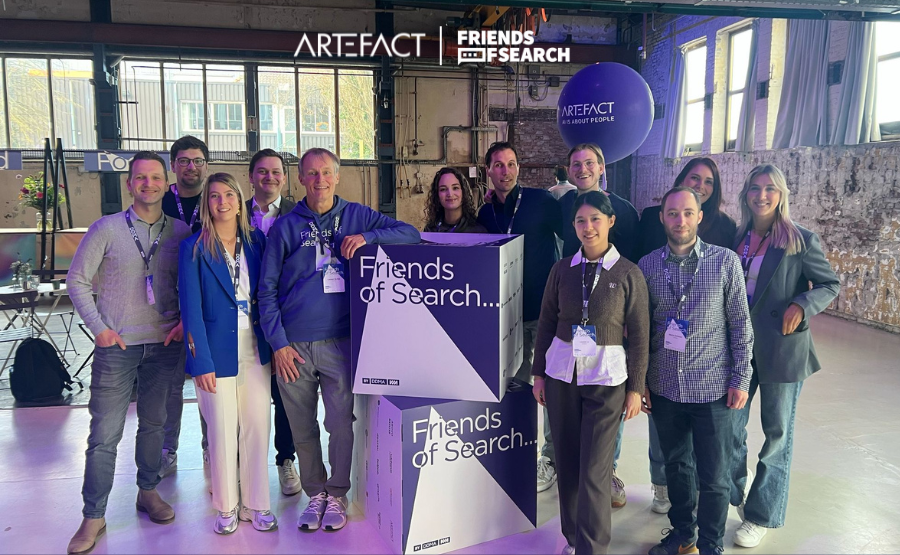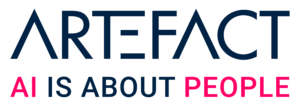This year the Artefact Benelux SEO-team was attending Friends of Search 2025! This article will cover key SEO findings and strategies shared at the Friends of Search event, including insights on omnichannel visibility, Binance’s SEO growth, the evolving role of structured data, and the future of SEO in an AI-driven world.
Earning Digital Visibility in an AI-Driven World
Name of speaker: Jes Scholz
The rise of AI is reshaping the digital landscape, bringing both opportunities and challenges for brands looking to maintain visibility. Traditional SEO strategies focused on keyword targeting and ranking positions are no longer enough to grow market share. To thrive in this new era, businesses must adopt a broader, omnichannel approach that prioritizes brand presence across multiple platforms.
Success in an AI-driven world requires relentless pursuit of new user acquisition through omnichannel SEO. You must build a robust content distribution engine, leverage distinctive brand assets, and maintain consistency across all platforms. By thinking beyond conventional SEO and embracing an expansive digital presence, brands can secure long-term visibility and growth in an evolving digital ecosystem.
How Binance achieved 100 million indexed pages and scaled SEO sustainably
Name of speaker: Dinesh Sivapragsam
During Friends of Search, Dinesh Sivapragsam shared insights into how Binance scaled its SEO efforts to support its rapid growth while maintaining long-term sustainability. With over 260 million registered users and ranking among the top 25 finance brands on Google, Binance has developed a robust strategy to balance organic visibility, brand establishment, and reduced reliance on paid traffic. Sivapragsam presented a case study detailing Binance’s SEO approach, challenges, and key learnings.
Binance’s SEO success stems from a combination of adaptability, structured processes, and a strong emphasis on collaboration. Their journey highlights the importance of transitioning from aggressive SEO tactics to a more sustainable, user-focused strategy. Key takeaways include:
- Aligning SEO content with market cycles ensures relevance.
- Implementing structured SEO governance prevents inefficiencies.
- Prioritizing high-impact initiatives maximizes long-term growth.
- A test-and-learn approach reduces risks and enhances adaptability.
- Fostering a collaborative, data-driven SEO culture leads to better outcomes.
Sivapragsam emphasized that SEO should not operate in isolation but as an integrated function within the business. By focusing on problem-solving, continuous learning, and data-driven decision-making, Binance ensures that SEO contributes to overall business success rather than being just a technical exercise.
Navigating the changing Google landscape: The role of MUM and AI in SEO
Name of the speaker: Cindy Krum
The digital marketing landscape is evolving, and Google is leading the charge. Recently, website traffic has been declining, even as rankings rise. This paradox is due in part to new AI-powered features like AI Overviews and Google’s Multitask Unified Model (MUM), which are reshaping how search results are processed and delivered. In this article, we’ll explore these changes and how businesses can adjust their SEO strategies accordingly.
As Google continues to refine its search capabilities with MUM and AI-driven features, businesses must evolve their SEO strategies. By focusing on user intent, context, and the micro-moments that guide the user journey, companies can navigate the changing landscape and ensure their content remains relevant and discoverable in an increasingly sophisticated search environment.
The changing role of structured data in search and LLMs
Name of the speaker: Jarno van Driel
From an Artefact perspective, we see that the world of structured data is in an interesting phase. The recent developments surrounding large language models (LLMs) raise new questions about how information is found and consumed. Therefore, it is essential to maintain a sober and evidence-based view on this topic, as we always strive for at Artefact.
The role of schema.org in search: The fundamental role of schema.org is to help search engines recognize the content on your web pages. It is not a mechanism for deep understanding by machines but rather a tool to help them recognize content. This distinction is crucial for having realistic expectations about how structured data impacts online performance.
Google as the dominant consumer of structured data: The focus on Google as the dominant consumer of schema.org is key. Since 2011, Google has been the most active in consuming and promoting structured data. This means that our strategies should align with Google’s guidelines and behavior to maximize visibility and performance.
The future of structured data and LLMs: The future of structured data is evolving as new developments, such as retrieval-augmented generation (RAG), emerge to bridge the gap between structured data and LLMs. Currently, most LLMs do not effectively leverage structured data, but techniques like RAG offer new possibilities. With RAG, structured data can be used in combination with search results, allowing for more accurate and relevant content generation. At Artefact, we are closely monitoring these developments to determine how we can effectively leverage them in the future.
Pragmatic recommendations for structured data: For now, our advice at Artefact is to remain pragmatic. Implement structured data strategically, ensuring it aligns with Google’s guidelines and provides clear value to users. Avoid chasing myths or adding excessive markup in the hope of achieving magical results. A well-executed structured data strategy should focus on meeting user needs and aligning with current technological capabilities to drive a successful digital presence.
From Artificial to Authentic Intelligence: The Future of Answer Optimisation from Search to Social
Name of speaker: Wil Reynolds – Seer Interactive
The final presentation of the day opened with a bold premise: that rankings are becoming more and more disconnected from revenue. Even as traffic over time diminished due to changes in the search landscape, Seer Interactive’s Wil Reynolds demonstrated that with the right interventions, his company’s revenue still went up. In this, he emphasised the shift to a more closed-off information landscape; key parts of user and performance data for the various digital marketing channels are no longer available (dark social, black-box LLMs etc.). In his view, marketing may have to return to an earlier era: a time where risk-taking and judgment calls were the order of the day, and data returns to a supporting role rather than driving nearly all decisions.
Breaking up the ‘Sea of Sameness’: Reynolds names the problem of SEO in an AI-powered world the ‘Sea of Sameness’ – the idea that due to very narrowly defined metrics and strategies for success, everyone tries to imitate ‘best practices’; without asking themselves whether it applies to their business or client. As such, he states that SEO professionals are part of the problem; though well-intentioned, their unwillingness to diverge from what is tried and true has led to a search landscape where most every site looks roughly the same.
In accordance with other SEO luminaries, he sees a new funnel developing:
- People find they have a Problem, and spend a good amount of time researching it; what are the ins and outs, how have others dealt with it;
- They search (in a highly specific, targeted query) for a Solution, often using an LLM or AI-powered search to do so;
- They then look specifically for an Individual or Company who is capable of solving this problem for them.
What follows from this is a new SEO objective; if you want to have these people convert, you want them to connect the dots on their own accord. It is no longer enough to simply optimize pages for a keyword and rank on it (say, ‘sustainable clothing’), because people are prone to bounce off the site once they realize that the brand does not truly live the values that they care about. Here, as SEO professionals, we must strike a balance: how much can we optimize, and how much do we aim for brand integrity?
Hyperspecificity and the future of branding: With AI search performing disambiguation of search intent right then and there on the SERP, it’s a whole new world. Customers looking to reward authenticity may imperil existing, well-established brands that have become disconnected from customer desires. Creating strong content that profiles the brand according to its values, in as wide a manner as possible, is most likely to create groundswell. It must be done in spaces where actual humans can share your links, and ideally repetitively to reinforce the associations that they have. In this way, a brand can still stand out in the modern Sea of Sameness.
Sharing over Search: new indicators for success: As demonstrated by multiple SEO thought leaders, the share of organic search rankings in the online marketing space is diminishing. Nevertheless, human-centric interaction spaces are growing inexorably – Reddit, Quora, TikTok and other social media. In these spaces, people give answers and ask questions regarding real, authentic problems that they are facing. A typical searcher appears much more likely to consume such content and view it as authentic for two reasons:
- It is recognizably another human expressing themself;
- It is not web-optimized, as opposed to focused on the subject matter.
As it turns out, over-optimization repels rather than attracts engagement. Reynolds’ thesis is that fostering engagement of real people across the internet creates brand awareness that indicates actual interest. Moreover, such genuine brand engagement is much more resilient to systematic changes in a changing tech landscape, where the update of an algorithm can wipe out years of optimization efforts.
Don’t drill down, go wide: The maxim here is not to drill down into hyper-optimalization, but to go wide and grow a network of interest instead. Of course, data can still play a key role here; targeted outreach to parties that show interest in your content and brand identity will prove much more effective at realizing actual revenue for your company or client. It is a bold vision for an AI-powered future – yet Wil Reynolds’ and Seer Interactive’s success show that perhaps there is a new, holistic path ahead for SEO that few people have yet considered.

 BLOG
BLOG








